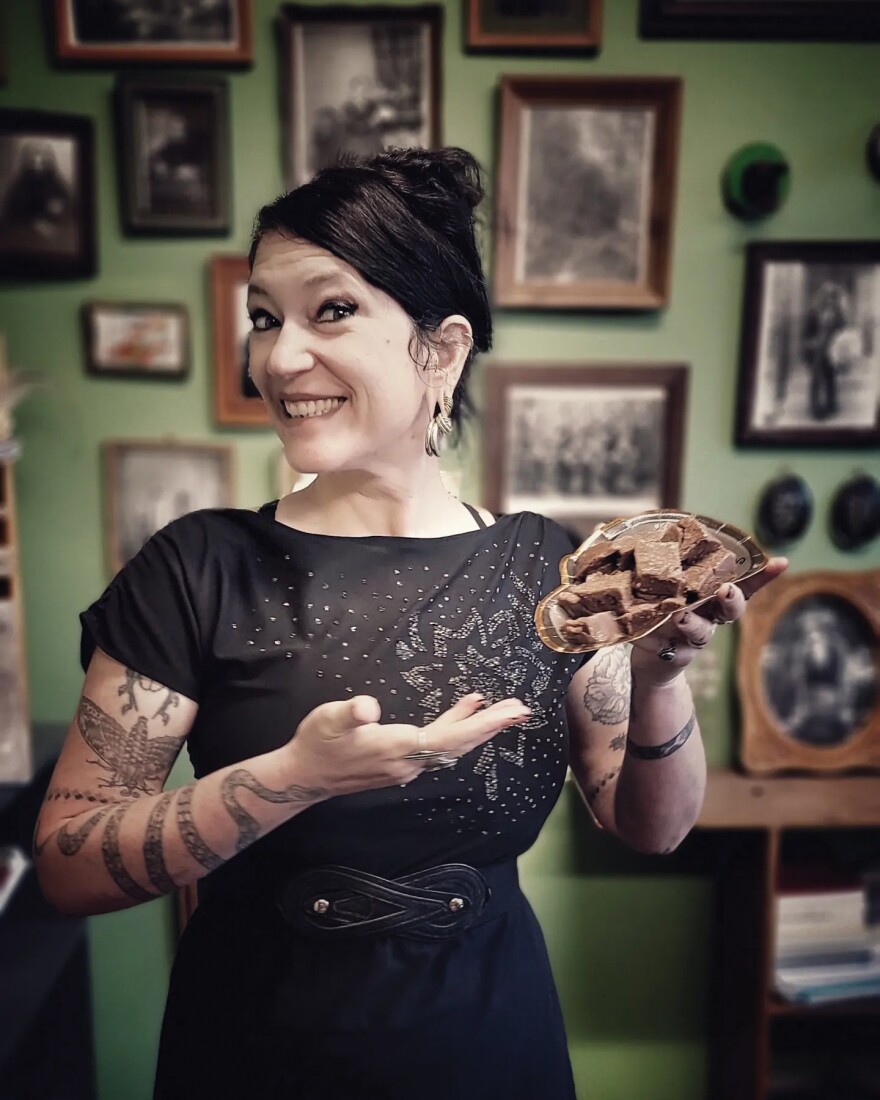Cemeteries have long been recognized as a place where the dead can talk with the living. Headstones can communicate religion, wealth, real or perceived social standing, participation in fraternal organizations, and more. Archaeologist Jim Deetz famously organized common motifs in 17th and 18th century headstones in Massachusetts into the Death’s Head, Cherub, and Urn and Willow typology that measured cultural change over time in Colonial New England. More recently, photos of the deceased, cherished pets, and other personalized information has been added to graves along with the traditional names and dates. We were joined by archivist-turned-TikTok sensation, Rosie Grant, on a recent episode of Underground History to discuss the recent trend of literally taking a signature recipe to the grave.
Grant, whose adventures you can follow on Instagram via @ghostlyarchive, first discovered gravestone recipes on accident while doing a class project. Just a few years later she has gathered nearly two dozen recipes from across the US and inadvertently started a heartwarming national conversation that explores the relationship between food, death, and memory. While data is not complete, and most of the research has been crowd sourced to date, it seems that the practice of inscribing recipes on headstones is a relatively new one. The earliest one Grant has come across dates to the 1990s and the most recent at the time of our conversation was from 2019. Most recipes are sweet, and most have limited—and in some cases incomplete—directions, and they seem to have been done in isolation of each other. When Grant reached out to the families, many have expressed surprise that other headstone recipes exist.
Food, along with cooking implements and infrastructure, is something that we regularly encounter in the archaeological record. We measure past mealtimes in terms of number or weight of chicken bones or seeds, empty cans and broken jars, but we don’t often have access to the more intimate aspects of cooking or experiencing the favorite dishes of the past. Sweet things like cookies, cakes, and other treats are even more invisible in the archaeological record, as their ingredients are unlikely to survive. I recently attended a session on Culinary Archaeology at a conference and was moved by the way that Harvard PhD candidate Veronica Peterson framed the preparing and sharing of meals as “caring” for others. By acknowledging the care that so often accompanies the preparation and consumption of food, we can start to see why it is one of the foundational aspects of every culture around the world. Food comforts us, reminds us of our childhoods, our parents, our grandparents, so I guess it is only natural that it would be a favored way to connect with our lost loved ones.

I was so fascinated by the practice of setting recipes in stone as a memorial to the one that made them best, that I tried my hand at one of the recipes Grant showcased on social media. While I would consider myself a decent cook, I am a terrible baker. I shied away from the more complicated cakes and cookies and picked “Kay’s Fudge” recipe as it had just a few ingredients and seemed simple (and my grandma Nanny used to make fudge at holidays). Had I been a baker or at all versed in sweets, I would have known that making fudge from scratch is not for novices (I should have been paying more attention to Nanny in the kitchen). It turned out as terrible as a poorly formed lump of chocolate, milk, and sugar can be, but I’d like to think that Kay would have appreciated my efforts (even if I mortified my own grandmother). Regardless of the results, the project left me thinking about Kay and her family and reminded me of my own. Not just my beloved Nanny, but also about all of the times my cousin would sneak pieces of fudge out of its hiding place in the crisper drawer before it was time to serve it.
I have heard rumor that Oregon has its very own gravestone recipe, but have yet to have it confirmed. Grant’s work has reminded me that there are so many ways to engage with, and learn from, the world around us. I know I, and most likely many of you, will be keeping a sharper eye out next time I visit a cemetery. The increased attention to this relatively unknown practice will likely lead to a spike in the memorialization of favorite recipes, but I hope it will also help us to think about and share with those we care for, the things we make best.




